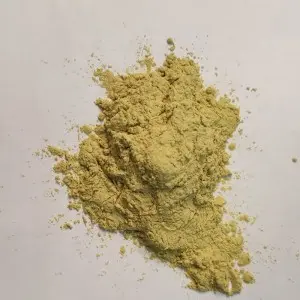ಡಿಸೆ . 06, 2024 09:59 Back to list
the role of pear pollination product
The Role of Pear Pollination in Fruit Production
Pear trees, belonging to the genus Pyrus, are beloved for their delicious fruits and ornamental value. However, the production of pears is highly influenced by the process of pollination, which plays a critical role in determining both the quality and quantity of the harvest. Understanding the importance of pear pollination is essential for fruit growers and agricultural scientists alike.
Pollination is the transfer of pollen from the male anthers of a flower to the female stigma. In the case of pear trees, most varieties are not self-pollinating, meaning that they cannot produce fruit without pollen from another compatible variety. This characteristic makes pollination an essential factor in the successful cultivation of pears. Adequate pollination results in better fruit set, which translates into higher yields and improved fruit quality.
The Role of Pear Pollination in Fruit Production
In a typical pear orchard, the presence of multiple pear varieties can greatly enhance pollination efficiency. Cross-pollination, where pollen from one variety fertilizes the flowers of another, often leads to better fruit development. Growers are encouraged to plant at least two to three different pear varieties that bloom simultaneously to ensure that adequate cross-pollination occurs. This practice not only improves yield but also contributes to genetic diversity, which can enhance the resilience of the trees against diseases and environmental changes.
the role of pear pollination product

However, several factors can affect the effectiveness of pollination. Weather conditions during the flowering period play a significant role; heavy rains, high winds, or cool temperatures can deter pollinators, reducing their activity and, consequently, the pollination rate. Additionally, the use of pesticides in orchards can harm beneficial insects, including bees. Farmers must strike a careful balance to protect pollinators while managing pests effectively.
In recent years, the importance of protecting pollinator populations has gained increasing attention. The decline of bee populations due to habitat loss, pesticide exposure, and diseases poses a significant threat to fruit production. Many fruit growers are now adopting practices that create bee-friendly environments, such as planting wildflowers and avoiding harmful pesticides during the blooming season. Such initiatives not only support the pollinators but also enhance the overall health of the ecosystem surrounding the orchard.
Furthermore, advancements in agricultural technology are aiding in the understanding and management of pear pollination. Researchers are exploring various techniques, such as the use of drones for pollination and genetically modifying plants to encourage self-pollination. These innovations hold the potential to revolutionize pear production and ensure food security in the face of changing climates and diminishing pollinator populations.
In conclusion, the role of pear pollination is vital for the production of quality fruits in orchards worldwide. While natural pollinators like bees play an indispensable role in this process, understanding the intricacies of cross-pollination and actively promoting healthy environments for these creatures will be crucial for the sustainability of pear cultivation. As we face challenges related to pollinator decline and environmental shifts, embracing a comprehensive approach to support pollination will ensure that future generations can continue to enjoy the sweet, juicy pears that are cherished around the globe.
-
Plant Pollen AI Analysis with GPT-4-Turbo Precision
NewsAug.05,2025
-
Plant Pollen Analysis with GPT-4 Turbo AI Technology
NewsAug.04,2025
-
AI-Powered Plant Pollen Analysis Using GPT-4 Turbo
NewsAug.03,2025
-
Plant Pollen Analysis: Fast & Accurate with GPT-4 Turbo
NewsAug.02,2025
-
KiwiPollen with GPT-4 Turbo: AI Health Supplement Boost
NewsAug.01,2025
-
Pollen Peach Tree AI Management with GPT-4-Turbo
NewsJul.31,2025